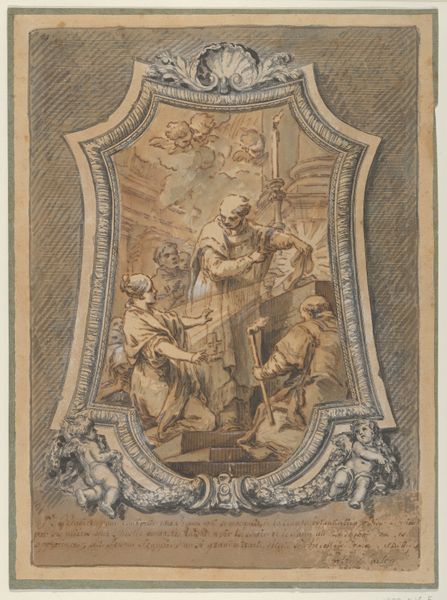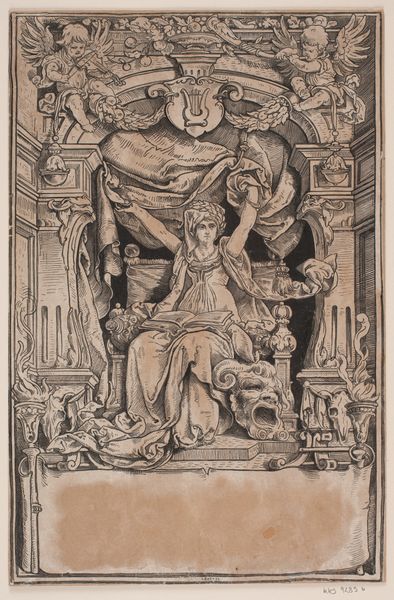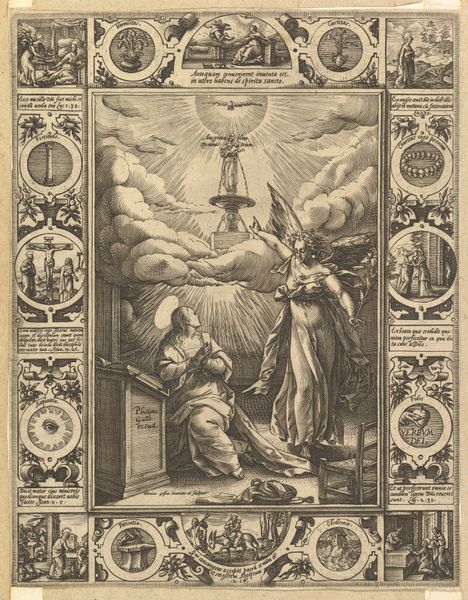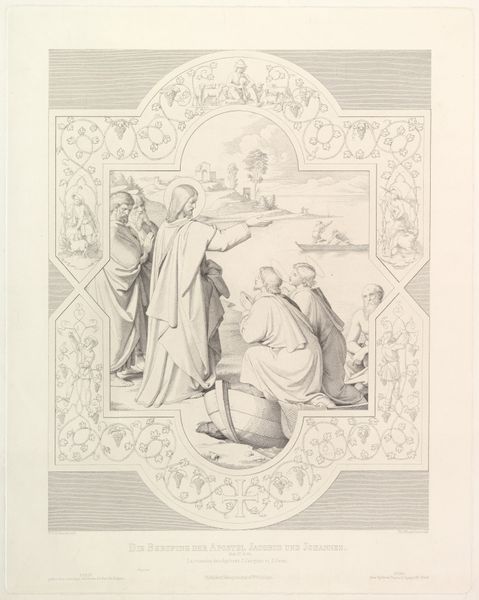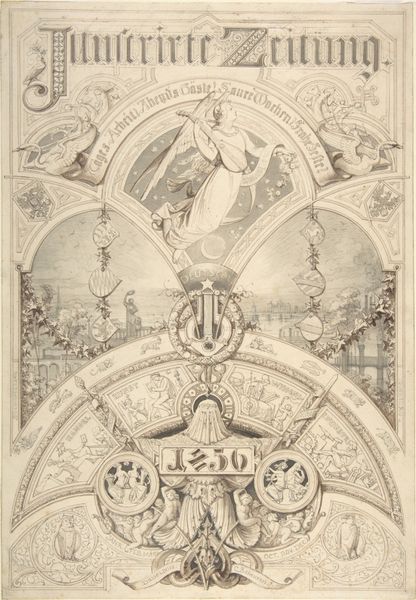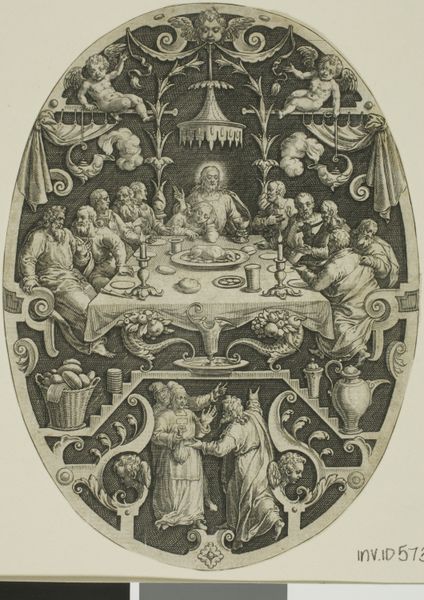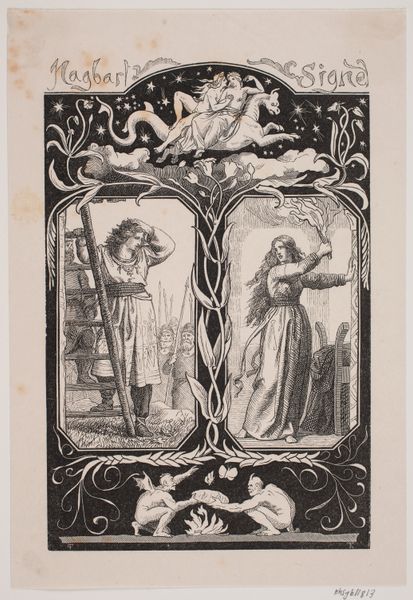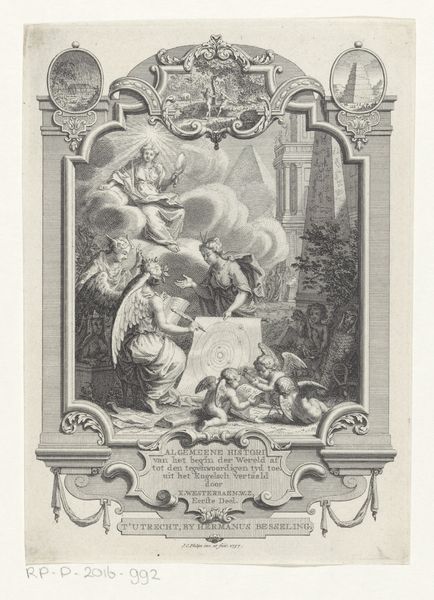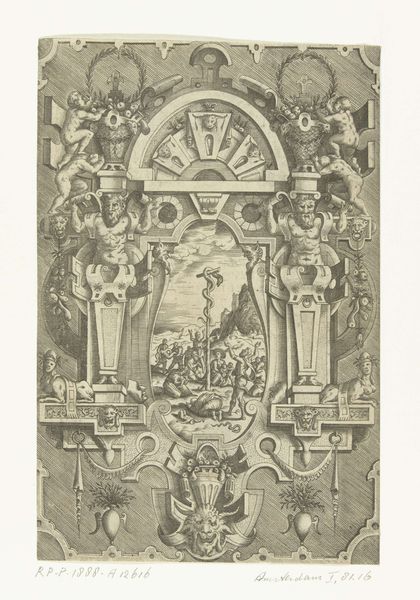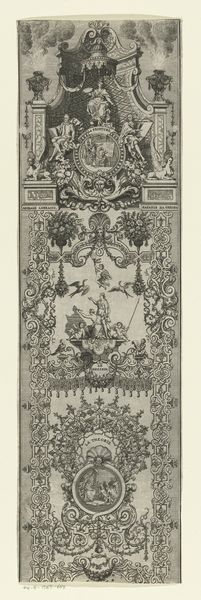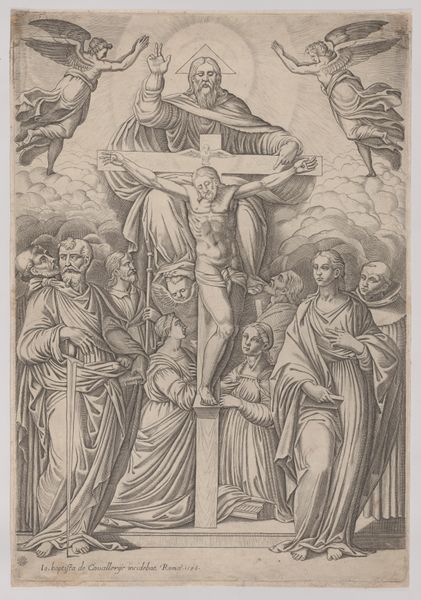
graphic-art, tempera, lithograph, print, poster
#
art-deco
#
graphic-art
#
tempera
#
lithograph
# print
#
landscape
#
figuration
#
orientalism
#
genre-painting
#
poster
Dimensions: height 355 mm, width 198 mm
Copyright: Rijks Museum: Open Domain
Editor: This is the "Kalenderblad van wijnkalender 1929," or Calendar page of wine calendar 1929. It was created before 1929, using tempera and lithography. It feels incredibly stylized, with the human figures resembling architectural components. How do you interpret this work through a formal lens? Curator: Its composition is certainly striking. Note how van Reen uses distinct registers to segment the image and how each is self-contained, contributing to the whole yet functioning autonomously. The restricted palette also creates a somber, structured rhythm throughout the work. Are you noticing how the use of shadowing helps build volume and shape in the figures, despite their flatness? Editor: I see the shading, yes, but why segment the work into three layers? And why use such a limited palette? Curator: Perhaps it’s an attempt to hierarchize the winemaking process, each level depicting a different stage, or perhaps it is mimicking the stacked architecture of Art Deco design, with pure visual elements abstracted into symbolic, but limited, cultural values. Notice the stylization in the rendering of figures: lines are hard, edges are clean, volume and depth are built through strict planar organization. What overall effect does it achieve, do you think? Editor: The strict lines create a controlled aesthetic. Is that common for art deco? Curator: Indeed, Art Deco is noted for its elegant design solutions achieved via formal strategies, rather than an embrace of pure functionality. How do you respond to this combination? Editor: I see how the planes emphasize the workers’ gestures, creating a distinct rhythm to each segment, connecting process to product through clear and measured geometry. It's as though each step has equal and measured import. Thanks, I am more appreciative of how the formal decisions define this piece. Curator: Precisely! Considering van Reen's calculated design, it suggests a clear conceptual objective: each decision reinforces this interplay between surface and symbolic value.
Comments
No comments
Be the first to comment and join the conversation on the ultimate creative platform.
